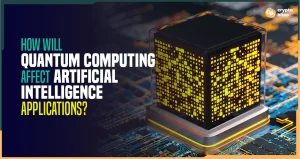
What is Polygon (MATIC)?
Few would argue that Ethereum is right up there with Bitcoin as one of the world’s leading blockchains.
When Bitcoin was first introduced in 2009, it was all about creating a new form of decentralized digital currency. But it didn’t take long for people to realize that there were plenty of other uses for blockchain technology.
Ethereum, powered by its native token Ether (ETH), was launched in 2015 to cash in on some of these possibilities. However, while it presented another form of decentralized currency, it brought much more to the table than Bitcoin.
One of ETH’s ultimate claims to fame was perfecting the concept of smart contracts and taking them mainstream. ETH’s open-source smart contract technology has proven to have plenty of use cases, from NFTs to DeFi protocols and dApps.
So, what’s the problem?
While Ethereum changed the game in many ways, no one’s perfect. Enter the blockchain trilemma.
This widely held theory says that the perfect blockchain would be decentralized, secure, and scalable. But it also claims that even the best blockchain can only pull off two of these three ideals.
Unfortunately, Ethereum has proven a remarkable testament to the theory’s soundness. While it nails decentralization and security, scalability is not exactly its strong point.
What exactly is blockchain scalability, you ask? Basically, the ability of a blockchain to support more traffic and transactions as it grows in popularity.
Imagine Ethereum as the world’s safest highway system. It leads to many incredible, innovative destinations – some of which can be lucrative places to set up a business.
Of course, everyone wants to drive on it. Who wouldn’t?
That’s where the issues come in. The more traffic the highway system attracts, the slower it moves, and the higher its tolls are forced to rise.
Ultimately, passengers had to accept that if they wanted to travel along ETH’s highways, they’d have to contend with the reality that it was both pricey and slow. That’s where layer 2 solutions came in.
What Is Polygon (MATIC)
Polygon is one of several layer 2 tools built to solve Ethereum’s scaling issues.
Polygon was initially released in 2017 as the Matic Network, which is why its native token is still called MATIC today. But what exactly did it do?
Let’s go back to our highway metaphor.
Sensing that the ETH highway system was getting overwhelmed, the Matic Network built a series of ‘bullet trains’ to run alongside it. In essence, these trains made it possible to get around ETH-land without actually having to deal with its legendary traffic.
Matic found a way to offer many of the same benefits ETH offers while being a hell of a lot faster and cheaper.
Using Plasma technology, Matic can process off-chain transactions that are finalized on the ETH platform. To put it in perspective, Ethereum can only process a few dozen transactions every second. On the other hand, Polygon can process tens of thousands.
Matic also made pricy transaction fees a thing of the past. As a result, even when ETH gas fees soared to $100 or more, Matic could perform the same tasks for pennies.
How Does Polygon Work?
In 2021, Matic Network was rebranded as Polygon and began expanding its efforts to become “Ethereum’s internet of blockchains.” While several other layer 2 solutions have cropped up along the way, Polygon is the only one compatible with the Ethereum Virtual Machine (EVM).
This means that the Polygon sidechain provides different blockchain scaling solutions and allows them to communicate with each other.
This concept can be a little hard to wrap your head around. So let’s just say that Polygon has added a range of intelligent new connections along the ETH highway system.
Blockchains can use these new connections to exchange information, thus allowing passengers to map out new routes that come with all the benefits they’re looking for.
Maybe a developer is looking to design a project with more speed, cheaper transaction costs, or tighter security. Whatever the case, Polygon can provide a series of friendly alternate routes to make it work.
Polygon Use Cases Explained
When it comes to the most popular ETH scaling solutions, Polygon is definitely a major contender. Its impressive range of use cases has attracted major investors, such as Mark Cuban.
Some of these use cases include:
- Polygon NFTs
Anyone who’s ever tried to mint an NFT on marketplaces like OpenSea can attest that ETH gas prices are not always for the faint of heart. That’s why OpenSea and other popular NFT sites are now giving users the option to mint via the Polygon network instead.
By using Polygon, you can create an NFT for virtually nothing. That way, you don’t have to worry about recouping gas fees if it fails to prove a masterpiece.
- Polygon Gaming
Polygon is all about Web 3.0 gaming and launched Polygon Studios to help things along. It also recently forged an alliance with Gameswift, with a shared goal of creating a whole gaming ecosystem for the internet of tomorrow.
Oh, and metaverses? Polygon’s all over it and has already been integrated into virtual worlds like Decentraland and Sandbox.
- Polygon DeFi
You’ll also find Polygon at the forefront of the DeFi movement. It’s integrated into everything from asset management solutions like Metamask and Rainbow to DeFi platforms like Aave and Compound.
It’s also used in alternative savings apps like PoolTogether and decentralized exchange platforms like Uniswap and SushiSwap.
Is Polygon A Good Investment?
As you can see, Polygon’s got a lot going on for itself. Ethereum may ultimately provide its own solutions (such as The Merge) to some of its most pressing problems. But, many speculate that even a perfect ETH 2.0 will unlikely keep up with Polygon’s top speeds and innovations.
Add in Polygon’s extensive network of established partnerships, and the future of Polygon is likely very bright.




